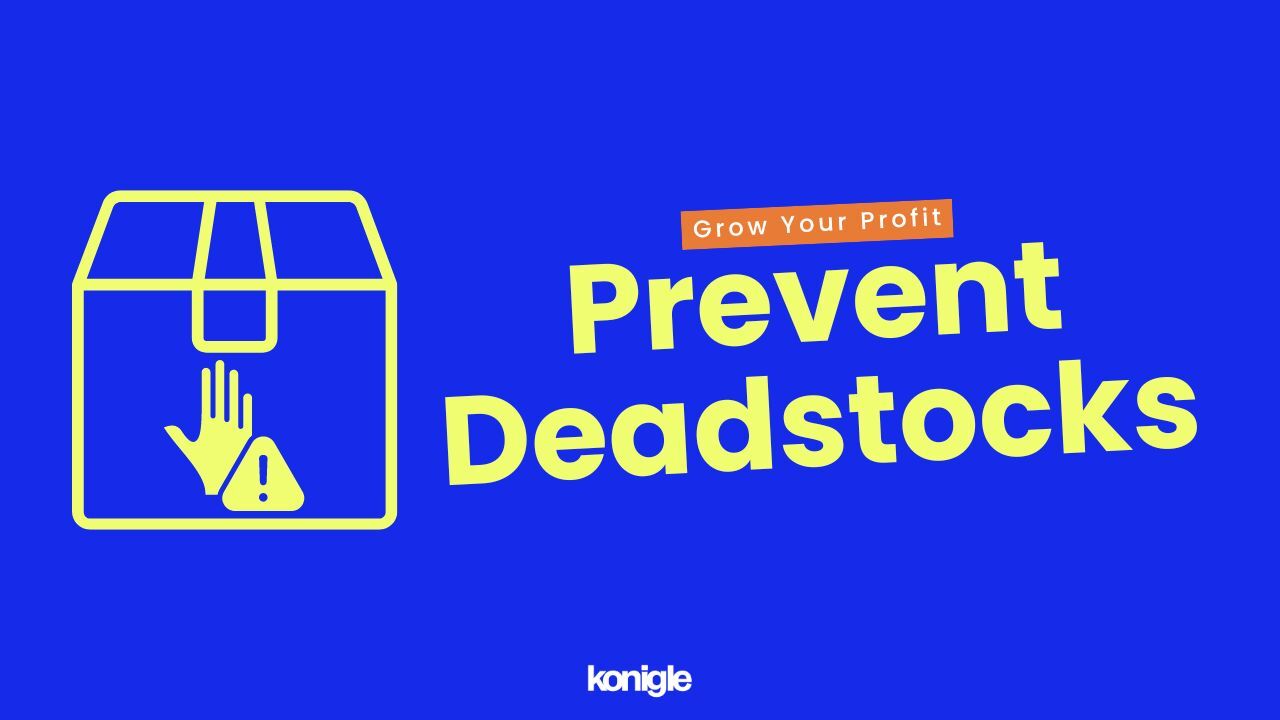Prevent deadstock

Sept. 7 2023
Deadstocks are unsold inventory that can tie up capital and take up valuable warehouse space. Preventing deadstocks helps reduce costs, improve cash flow, free up warehouse space, improve customer satisfaction, and help businesses stay competitive.
What are deadstocks?
One of the 7 strategies that is important to e-commerce businesses is preventing deadstock. Deadstock is unsold inventory that has been sitting on the shelves for an extended period of time. It can be a major problem for e-commerce businesses, as it ties up capital and takes up valuable warehouse space.
Why is preventing deadstocks important?
+ Reduces costs
Deadstock costs money to store, insure, and eventually dispose of. By preventing deadstock, you can save money on these costs.
+ Improves cash flow
When you have less deadstock, you have more cash available to invest in other areas of your business, such as marketing or product development.
+ Frees up warehouse space
Deadstock takes up valuable warehouse space that could be used for other purposes, such as storing new inventory or shipping products to customers.
+ Improves customer satisfaction
When customers can't find the products they want, they are more likely to shop elsewhere. By preventing deadstock, you can ensure that your customers have a positive shopping experience.
+ Helps you stay competitive
Businesses that are able to prevent deadstock are more likely to be able to offer lower prices and better customer service than businesses that have a lot of deadstock.
How to prevent deadstocks?
Tips for preventing deadstocks
1. Do your research
Before you start selling any products, make sure you do your research to determine the demand for those products. You can use tools like Google Trends and Amazon Seller Central to see how often people are searching for a particular product. You can also check the sales history of similar products to get an idea of how well they sell.
2. Set realistic inventory levels
Don't overstock on products that you're not sure will sell. Start with small quantities and then increase your inventory levels as you get more data on how well the products are selling.
3. Use demand forecasting tools
There are a number of demand forecasting tools available that can help you predict how much inventory you need to order. These tools can take into account factors such as seasonality, trends, and competition.
Tactics for preventing deadstocks
A pricing strategy in which a newly launched product is initially set at a high price and then gradually its price is lowered over time. The main goal of the price skimming strategy is to maximize the profit potential of a newly launched product’s novelty factor taking into account demand, timing, and competition.
2. Run clearance sales and promotions
If you have deadstock, you can run clearance sales or promotions to clear it out. This can help you recoup some of your investment and free up space in your warehouse.
3. Pre-ordering
When customers need to pre-order a product in order to purchase, it gives businesses an accurate estimate of the demand for a product. This reduces the likelihood of overproduction which hence helps prevent deadstocks.
Real-life examples of tactics that prevent deadstocks
Interested to see more real-life examples? Visit konigle.com.